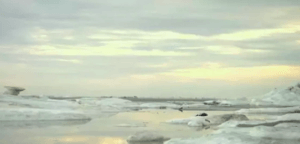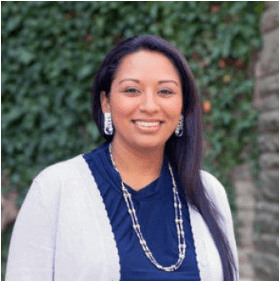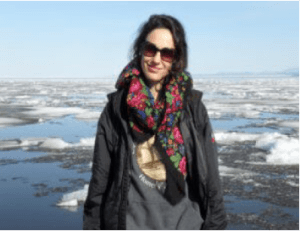By Chelsea Franchette
In the film Kivalina: Life in the Modern Arctic, the audience has an intimate look into the lives of the Inupiaq people in the Native Village of Kivalina in Northern Alaska.  Throughout the documentary, the village faces a huge obstacle: climate change. The filmmaker, Gina Abatemarco, explores how climate change impacts Kivalina and its community members. The film also delves into the people’s lifestyles, culture, food sources, and views on climate change as well as the government’s role in response to this ongoing threat.
Throughout the documentary, the village faces a huge obstacle: climate change. The filmmaker, Gina Abatemarco, explores how climate change impacts Kivalina and its community members. The film also delves into the people’s lifestyles, culture, food sources, and views on climate change as well as the government’s role in response to this ongoing threat.
The Inupiaq people reside in a small and remote village. The film offers a window into the daily lives of this community by showing different activities in which the community members partake and interviewing multiple individuals. A brief portion of the film showcases some of the local teenagers. The community members participate in many activities together, and rely on one another for their needs. The community is rich in culture and has its own traditions. The film portrays how the community members hunt for their food by catching fish, whales, and seals and how they prepare the food for their families. In recent years, whaling has become a challenge for the community due to the lack of ice in the area. Climate change causes the thinning ice around Kivalina, and the severe ocean storms have led to erosion around Kivalina’s perimeter. Another ocean storm could be devastating for the village if the ocean waves are high enough and trigger an emergency evacuation.
The film examines possible adaptation responses to the challenges that Kivalina faces from climate change. The government proposed building a sea wall to protect Kivalina from the ocean storms. There was government funding to help move the village, but the government decided to fund the sea wall instead. Many within Kivalina expressed their disagreement with both the government and the sea wall. Some of Kivalina’s residents wanted funding for the village’s relocation rather than for the sea wall because they believed that the sea wall would not protect them from the ocean’s powerful waves during the next storm.
Although a number of community members expressed a desire to allocate funding for the village’s relocation, there were also many who wanted to stay in Kivalina no matter how dangerous the conditions. Those opposing the move have such strong ties with Kivalina and its culture that they do not want to abandon it. There is also documentation of a need for a “village move” in Kivalina’s history. Some of the documentation went as far back at 1912, but the members of Kivalina did not want to leave, and they retain the same priorities today.
During the  commentary portion of the event, the audience heard from three speakers: Enoch Adams, a member of Kivalina; Dr. Kelsey Leonard, an assistant professor in the Faculty of Environment at the University of Waterloo in Ontario and an expert on indigenous legal rights; and Gina Abatemarco, the filmmaker. Mr. Adams described how Kivalina has been moving forward in its evacuation efforts due to climate change. He discussed how the island has built an evacuation road and hosts a new inland school site. Furthermore, he stated that the community is split about the new school, as the majority of the community stayed while some community members decided to live near the new school. He also noted that the community is fond of Abatemarco, the filmmaker, and how she embraced the community.
commentary portion of the event, the audience heard from three speakers: Enoch Adams, a member of Kivalina; Dr. Kelsey Leonard, an assistant professor in the Faculty of Environment at the University of Waterloo in Ontario and an expert on indigenous legal rights; and Gina Abatemarco, the filmmaker. Mr. Adams described how Kivalina has been moving forward in its evacuation efforts due to climate change. He discussed how the island has built an evacuation road and hosts a new inland school site. Furthermore, he stated that the community is split about the new school, as the majority of the community stayed while some community members decided to live near the new school. He also noted that the community is fond of Abatemarco, the filmmaker, and how she embraced the community.
Dr. Leonard recounted her experience as a member of the Shinnecock Indian Nation in relation to Mr. Adams’s experience. She educated the viewers on some of the aspects of Indigenous Nations’ relocation with regard to time and money. Dr. Leonard offered further insight into how climate change affects Indigenous Nations and the federal government’s role in these matters.
Abatemarco discussed her emotional attachment to Kivalina and to its beautiful history. She explained how she entered this project, including that she related to the sense of loss and the  sense of place that Kivalina was experiencing. During her seven-year journey in making the film, she formed deep friendships and connections and, through doing so, gained knowledge about the culture.
sense of place that Kivalina was experiencing. During her seven-year journey in making the film, she formed deep friendships and connections and, through doing so, gained knowledge about the culture.
The film gave attendees the chance to feel that they are a part of a different lifestyle and environment. The audience gained insight into how the people of Kivalina abide by traditions, culture, and community values, as well as the struggles that they must overcome. Watching the film allowed the audience to see how Kivalina is confronting the challenge of climate change and what it means to the Inupiaq people to remain on the island regardless of the current dangers.
To view the recording of the film screening and commentary, please visit the 2021 IGU Biennial Symposium webpage. You can also watch interns Emily O’Sullivan and Madison Hanrahan interview Abatemarco here.
